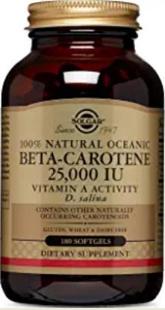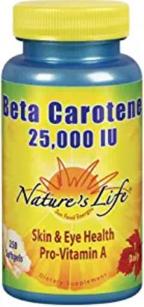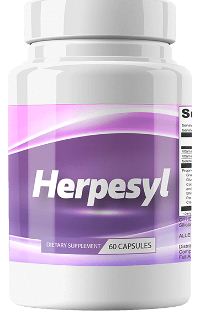If you have opened this page in search of the best vitamin A supplements, you have been lucky because here you will receive the information you need about them.
In addition to submitting to your consideration three of the best vitamin A supplements chosen by our team, this article provides you with indicators that you should take into account when choosing a vitamin A supplement.
I also give you information that you should know about vitamin A in which I include the forms, names, functions and sources of this vitamin, as well as signs, symptoms and diseases due to its deficit or excess and the recommended intake by age and sex.
The article is divided according to the content described in the previous paragraphs in order to facilitate its reading. From the table of contents you can access the part of your interest and return to it again with just one click.
If your interest focuses only on the best vitamin A supplements and the indicators to choose them, you only need to read the first part of the article, although I recommend you read the entire article because it contains very useful information that you should know if you consume a supplement of this vitamin.
The best vitamin A supplements [↑]
If you want to choose a vitamin A supplement, I recommend that you first compare several of them.
This section is dedicated to helping you do this by providing features that you should consider as indicators in the comparison.
I also submit for your consideration three of the best vitamin A supplements from Amazon that our team has chosen after a thorough analysis.
First I present a synthesis of the evaluation of the three supplements and then the description of the indicators that our team used to choose them.
If you click on link of each supplement in the table, you will be able to access more information and make your own assessment.
Three of the best vitamin A supplements
The three supplements that our team has selected correspond to provitamin A from carotenoids whose intake does not cause an excess of this vitamin in your body.
Food Carotene manufactured by Solaray

This vitamin A supplement has a very good reputation among Amazon users. More than 38 of them have expressed their opinions and the average rating is higher than four stars on a scale of five.
One capsule of Food Carotene per day is enough to meet anyone’s daily vitamin A needs.
The products manufactured by Solaray have a great reputation in the market. These laboratories were acquired by Nutraceutical in 1993, a company that sells over 7500 products in some 60 countries.
Beta-Carotene manufactured by Solgar

This product also has recognized quality and excellent acceptance by Amazon users. More than nine of them have expressed their opinions and the average rating is very favourable, with the five-star category predominating.
Just like Solaray’s Vitamin A, one capsule of Solgar’s Beta-Carotene per day is enough to meet anyone’s daily needs.
This product is manufactured by Solgar, a company founded in 1947 whose products are recommended by 98% of its customers.
Beta Carotene manufactured by Nature’s Life

Nature’s Life Beta Carotene capsules are very popular with Amazon users. Just look at the more than 16 opinions collected in which the users’ rating predominates at five stars.
As in all other cases, one capsule per day of this natural supplement is sufficient to satisfy everyone’s vitamin A needs.
Nature’s Life is a company whose products have a good reputation on the market. It was founded in 1979 and sells about 400 products.
Indicators for choosing a vitamin A supplement
When you are analyzing a vitamin A supplement, you should always consider the following indicators:
- User opinions.
- Price.
- Vitamin form.
- Satisfaction of the recommended intake.
- Reputation of the manufacturer.
User opinions
The opinions of users are an indicator to be taken into account when choosing a good vitamin A supplement and any Amazon product. The best vitamin supplements have favorable user opinions.
Amazon users judge products using a scale of six values which are associated with stars; the maximum is 5 and the minimum is 0.
The system that processes the opinions of users calculates the average of the ratings issued and represents it with stars.
In the opinions of users you must take into account two important parameters: the number of opinions and the average of the ratings issued.
Price
The second indicator to take into account is the price. I have placed it as a second because we always pay attention to it, but the following indicators have more weight than the price when selecting a vitamin A supplement.
Let’s take the cases of two vitamin A supplements. The first has a price of $16.72 and the bottle contains 200 capsules. The second is priced at $9.50 and the bottle contains 100 capsules. Which of them is cheaper?
If we divide each price by the corresponding number of capsules, we get $0.0836 and $0.0950, respectively. This means that one capsule of the first supplement has a lower price than one of the second supplement, even though the second one has a lower price.
Vitamin A form
Vitamin A exists in four fundamental forms that I describe in the second section of this article, which can be grouped into two types. The first type corresponds to preformed vitamin A from foods of animal origin such as cod liver oil.
The second type corresponds to provitamin A from carotenoids that the body must transform into vitamin A through metabolism. This is the recommended type because excess vitamin A can be toxic, but this form does not usually cause excess.
Satisfaction of the recommended intake
The fourth indicator is the satisfaction of the recommended intake.
To analyze this indicator you must take into account the recommended intake and the tolerable upper intake level according to your age and sex.
These data are available in the tables in section six and are expressed using the vitamin A unit described in section two.
Manufacturer’s reputation
I’ve included the manufacturer’s reputation in the list of indicators.
To assess this indicator can be considered as parameters the criteria issued by the health authorities, certifications granted to the manufacturer in recognition of the quality of their products and market presence.
Food and Drug Administration (FDA)[1] has a list of supplements censored for including undeclared ingredients on the label that are not allowed in supplements.
This list includes the name of the product, its manufacturer and the name of the hidden component.
If a manufacturer appears on this list, it indicates the information they provide about their products may not be reliable.
Vitamin A. Its forms, names, units and functions [↑]
Vitamin A is not a single substance, but any of the organic compounds of a group to which retinol, retinal, retinoic acid and several precursor substances including carotenoids belong: beta-carotene, alpha-carotene, gamma-carotene and cryptoxanthin beta.
Retinol is an unstable alcohol that is easily destroyed by exposure to heat, light, or air. Its name is related to its role in the generation of pigments necessary for the functioning of the retina of the eye.
The retinal is an aldehyde[2] obtained by oxidation of retinol. The word aldehyde comes from Latin and means dehydrogenated alcohol.
Retinoic acid is a metabolic product (metabolite) obtained by oxidation of the retinal.
Carotenoids are pigments of organic origin found in some plants, algae, fungi and are also produced by bacteria.
There are more than 700 carotenoids. The most important as precursors of vitamin A are: beta-carotene, alpha-carotene, gamma-carotene and beta cryptoxanthin.
The most active of the four is beta-carotene, which is attributed with twice the vitamin activity of the remaining three.
Other health benefits attributed to these substances include strengthening the immune system, inhibiting premalignant lesions, decreasing the risk of macular degeneration and cataracts associated with aging, and decreasing the risk of cancer of certain types.
With regard to the use of carotenoid supplements to prevent lung cancer the National Institute of Health[3] recommends caution because excessive consumption of these supplements can be harmful.
Forms of vitamin A
The fundamental forms of vitamin A are: retinol, retinal, retinoic acid and provitamins.
Retinol is the form in which the vitamin is stored, but the active form is retinal. The retinol is transformed into retinal by oxidation and inversely, the retinal becomes retinol by reduction.
The retinoic acid is obtained from the retinal by irreversible oxidation which means the impossibility of obtaining retinal from retinoic acid.
In human body tissues and food of animal origin containing vitamin A, it is stored in the form of retinyl ester[4], primarily as retinyl palmitate.
Vitamin A names
In addition to the name vitamin A, retinol and axerophthol are also used as names for the substance. The latter has its origin in the usefulness of vitamin A in the treatment of xerophthalmia: a disease that affects vision.
Vitamin A units in foods and supplements
The amount of vitamin A in foods and supplements was long expressed in international units. One international unit (IU) is equivalent to 0.3 µg of retinol; 0.6 µg of beta-carotene or 1.2 µg of the rest of the three provitamin A carotenoids.
Some manufacturers of the best vitamin A supplements still use this obsolete unit.
Here the Greek letter µ is an abbreviation of the micro prefix meaning millionth part. Some manufacturers use on the label the abbreviation mc for the micro prefix.
The international unit of vitamin A was replaced by a new unit named retinol equivalent (RE) which was officially used until 2001 in the USA.
This approach was based on considering that 1 RE is equivalent to 1 µg of retinol, 2 µg of beta-carotene dissolved in oil, 6 µg of beta-carotene in the normal diet or 12 µg of the rest of the three carotenoids in the normal diet.
This new unit was based on research results and states that 1 RAE is equivalent to 1 µg of retinol, 2 µg of beta-carotene dissolved in oil, 12 µg of beta-carotene in the normal diet, or 24 µg of the rest of the three carotenoids in the normal diet.
The current data for the recommended intake of vitamin A are expressed with this new unit.
Functions of vitamin A
The need for intake of foods or supplements containing vitamin A is determined by the functions of this substance in the body.
- Vitamin A helps the formation and maintenance of teeth, bone tissues, soft tissues, mucous membranes and skin. It also helps maintain the integrity of the immune system.
- The retinal combines with the protein opsin to form rhodopsin in the retina of the eye. This substance absorbs the light needed for vision in low light or heat.
- Retinoic acid acts as a hormone in regulating the expression of various genes, contributes to preventing the production of disease-causing high molecular weight keratin, participates in the mechanisms that control the inflammatory reaction, and protects cellular mitochondria from oxidative damage.
Sources of vitamin A and antagonists [↑]
Vitamin A sources are conventional foods and supplements.
Conventional foods containing vitamin A are divided into two groups: foods of animal origin and foods of vegetal origin.
Foods of animal origin with more vitamin A content are: liver; fish such as herring, sardines and tuna; egg yolk, meat and whole milk.
Several yellow leafy plants and green leafy plants are foods rich in carotenoids precursors of vitamin A. These include: carrots, yellow squash, broccoli, sweet potatoes, kale, spinach, green lettuce, melon, peaches, papaya, corn, tomatoes, and oranges.
This skin coloration gradually decreases from the moment the high intake of carotenoids is discontinued.
Vitamin A supplements are available in shops and pharmacies. In the first section of this article I have described three of the best natural vitamin A supplements available on Amazon.
The first two are anion-exchange resins used to treat high cholesterol and neomycin is an antibiotic.
Vitamin A deficiency [↑]
Vitamin A deficiency is called avitaminosis A. Its fundamental causes are the consumption of a diet with insufficient content of this nutrient and the bad absorption of fats.
Signs and symptoms of vitamin A deficiency
Avitaminosis due to vitamin A deficiency may cause one or more of the following signs and symptoms:
- Night blindness.
- Dry skin.
- Low resistance to infection.
- Dry eyes.
Diseases due to vitamin A deficiency
Avitaminosis A can cause the following diseases:
- Keratitis: inflammation of the cornea.
- Keratomalacia: softening and death of the cells of the cornea that can cause its perforation, prolapse of the iris or complete infection of the eyeball.
- Xerophthalmia: an eye disease characterized by persistent dryness of the conjunctive membrane and opacity of the cornea.
- Keratosis: dermatosis characterized by abnormal growth of the epidermis. Due to the scaly appearance of the skin, the disease is also known as goose bumps or toad bumps.
In interpreting the results, a scale of five categories is used: 1) deficient, 2) marginal, 3) satisfactory, 4) excessive and 5) toxic.
The satisfactory category expresses adequate levels of vitamin A and corresponds to concentrations from 0.70 µmol/L to 1.75 µmol/L.

When the blood test shows a vitamin A concentration less than 0.70 µmol/L, there is a deficit, which is considered marginal if the concentration is greater than or equal to 0.35 µmol/L and deficient, if it is less than 0.35 µmol/L.
If the plasma concentration of vitamin A is greater than 1.75 µmol/L, there is excess vitamin A which is considered toxic, if this concentration is greater than 3.5 µmol/L.
Excess of vitamin A [↑]
Vitamin A excess in the body is called hypervitaminosis A. The fundamental cause of this condition is the excessive intake of vitamin A from animal origin or preformed vitamin A supplements.
Vitamin A is one of the most toxic. Signs and symptoms often caused by its excess include: yellowing of mucous membranes and skin, dry skin, headache, vomiting, blurred vision, irritability, anorexia (not nervous), vomiting, muscle weakness, mental disturbance and drowsiness.
When hypervitaminosis A is chronic, its toxic effects are more severe and can cause bone fractures due to decreased mineral density, liver damage, body weight loss, anemia, fever, fatigue, insomnia, or diarrhea.
Recommended intake [↑]
With respect to the recommended daily intake of nutrients three concepts are used: recommended dietary allowance, adequate intake and tolerable upper intake level. All three refer to total intake from food or supplements.
Adequate intake (AI) is used when there are insufficient data to calculate the recommended dietary allowance and it is based on estimation.
The tolerable upper intake level is the maximum level of intake that is unlikely to have risks of adverse effects. Its abbreviation is UL and it comes from the phrase upper intake level. The values in Tables 2 and 3 refer to preformed vitamin A, i.e. it does not include provitamins.
The data in the tables are expressed with the retinol activity equivalent unit (RAE) that I described in the analysis of the vitamin A units.
Recommended intake in infants, children and adults
Table 1 shows the recommended dietary allowance and tolerable upper intake levels for people over 12 months of age. Data for infants (0-12 months) are marked with an asterisk (*) and they refer to adequate intake because when the calculations were made there was not enough information to determine the RDA.
| Table 1: Recommended dietary allowance or adequate intake and tolerable upper intake (UL) levels of vitamin A by age and sex | |||
|---|---|---|---|
| Age | Sex | UL | |
| M | F | ||
| 0-6 months of age | 400* | 400* | 600 |
| 7-12 months of age | 500* | 500* | 600 |
| 1-3 years old | 300 | 300 | 600 |
| 4-8 years old | 400 | 400 | 900 |
| 9-13 years old | 600 | 600 | 1700 |
| 14-18 years old | 900 | 700 | 2800 |
| Over 18 years old | 900 | 700 | 3000 |
| Source: documents published by National Academic Press[5]. | |||
Recommended intake in pregnant or lactating women
Table 2 shows the recommended dietary allowance and tolerable upper intake level for pregnant or breastfeeding women.
| Table 2: Recommended dietary allowance and tolerable upper Intake levels (UL) of Vitamin A in pregnant or nursing women | |||
|---|---|---|---|
| Age | Condition | UL | |
| Pregnancy | Breastfeeding | ||
| Up to 18 years old | 750 | 1200 | 2800 |
| Over 18 years old | 770 | 1300 | 3000 |
| Source: documents published by National Academic Press[5]. | |||
If you look at Table 2, you can conclude that during pregnancy or lactation women over 18 years should not exceed the limit of 3000 µg of retinol in their daily intake, ie 10000 IU of vitamin A.
Final notes on the best vitamin A supplements [↑]
In this article you have been able to learn about three of the best natural vitamin A supplements available at Amazon.
I have also provided you with five indicators that you should not overlook when choosing a good quality vitamin A supplement.
The rest of the content of the article has been aimed at getting to know vitamin A better so that you don’t consume the supplements blindly.
If the information I’ve given you has been useful to you, share it with your social networks friends so that they too can benefit from it.
References:
1. ↑ Dietary Supplements. FDA. https://www.fda.gov/food/dietary-supplements
2. ↑ Aldehyde. Wikipedia. https://en.wikipedia.org/wiki/Aldehyde
3. ↑ Vitamin A. National Institute of Health. https://ods.od.nih.gov/factsheets/VitaminA-HealthProfessional/
4. ↑ Ester. Wikipedia. https://en.wikipedia.org/wiki/Ester
5. ↑ Lagua, R. & Claudio, V. (2004). Nutrition and Diet Therapy Reference Dictionary. MacGrau-Hill: New York.


